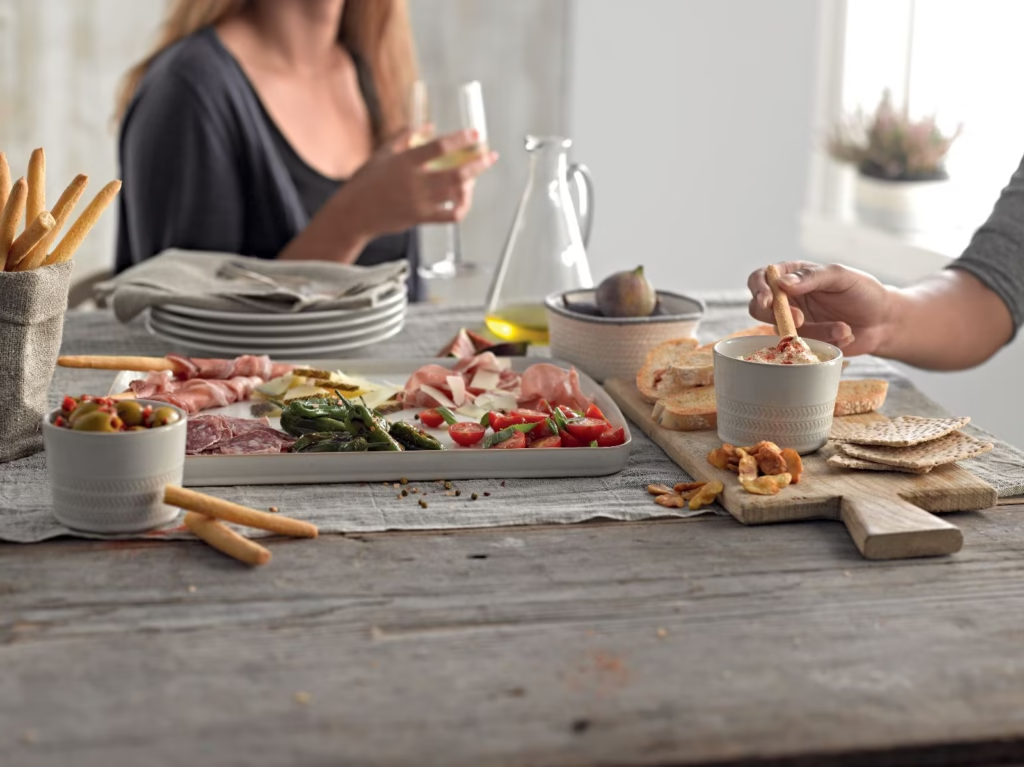
How To Create An Optimal Charcuterie Board With Locally Sourced Ingredients
Charcuterie boards have become a common feature at social gatherings, providing a visually appealing and delectable selection of meats, cheeses, fruits, nuts, and condiments. A well-organized charcuterie board is guaranteed to impress, whether you are hosting a small dinner party, a holiday celebration, or simply savoring a casual night in. The procurement of ingredients locally is what further distinguishes a charcuterie board, as it guarantees the freshest, highest-quality items for your board and supports regional producers. This guide provides instructions on assembling the perfect charcuterie board using locally sourced ingredients.
1. Begin With The Appropriate Meats
It is crucial to choose high-quality meats for a charcuterie board, as they are the centerpiece. Typically, a diverse array of flavors and textures is desirable, including a dry-cured sausage, a classic slice of prosciutto or salami, and a silky pate. Visit Littleton’s Best Meat Market for a variety of artisanal meats that can elevate your board when you procure them locally. Unique, small-batch products are frequently available at local markets, which may not be available at larger grocery stores. Seek a blend of fresh, cured, and smoked meats to offer a variety of flavors, including sweet, piquant, salty, and acidic.
Please take into account the following:
- Salami: This traditional selection is available in a diverse array of flavors, including garlic-infused and peppered.
- Sausage: Seek out small-batch, locally produced sausages that may be seasoned with herbs, spices, or even fruits like pears.
- Pate: This meat spreadable option contributes a pungent flavor and a creamy texture.
2. Incorporate A Variety Of Cheeses
The second indispensable element of an exceptional charcuterie platter is cheese. Similar to proteins, it is crucial to provide a diverse array of flavors and textures. Consider incorporating a blue cheese, a smoked variety, a firm cheese, and a soft cheese. When looking for locally sourced cheeses, consider visiting small dairy farms or local cheese businesses that specialize in high-quality, artisanal cheeses.
3. Incorporate Both Fresh And Dried Fruits
Fruits provide a burst of color and vitality to your charcuterie board. Select fruits that are locally sourced and in season to guarantee that you are making the most of the available options. In contrast to the robust flavors of the meats and cheeses, fresh fruits such as grapes, apples, pears, and figs provide a revitalizing taste. The salinity of the meats is offset by the grainy texture and natural sweetness of dried fruits, such as apricots, raisins, and cranberries.
4. Incorporate Complementary Spreads And Condiments
Your charcuterie tray can be revitalized with the appropriate condiments. Local honey, preserves, and chutneys contribute complexity and flavor. Consider serving a honeycomb to complement the cheeses or coupling the sausages with a piquant mustard. It is advisable to provide condiments that are complementary to the other flavors on the menu, but do not dominate them.
5. Incorporate Nuts And Crackers
Your charcuterie tray is complete with the ideal final touches: nuts and crackers. Crackers offer a neutral foundation for coupling with cheeses and meats, while nuts offer texture and bite. Almonds, walnuts, or pecans, which are locally sourced, can provide a delectable texture. Select artisanal crackers that can withstand the weight of meats and cheeses without overpowering the other flavors.
6. The Importance of Presentation Cannot Be Over
After you have collected all of the necessary ingredients, it is time to construct your charcuterie board. Your board’s allure is significantly influenced by its presentation. Place your larger items, such as cheese wedges and proteins, around the perimeter of the board to begin. Then, populate the empty spaces with smaller items, such as seeds, fruits, and condiments. To prevent the spillage of sauces or spreads onto other items, it is recommended to use small containers. Ensure that all items are arranged in a manner that enables your visitors to readily access and sample them.
Conclusion
The key to creating an ideal charcuterie board with locally sourced ingredients is to ensure that it is well-balanced and diverse. You can guarantee that your board will be both visually appealing and delectable by incorporating seasonal fruits and almonds, fresh cheeses from local dairies, and high-quality meats from Littleton’s Best Meat Market. This board is suitable for any occasion. A meticulously composed charcuterie board will be the centrepiece of your buffet, whether you are hosting a party, savoring a family gathering, or simply indulging in a delectable nibble.